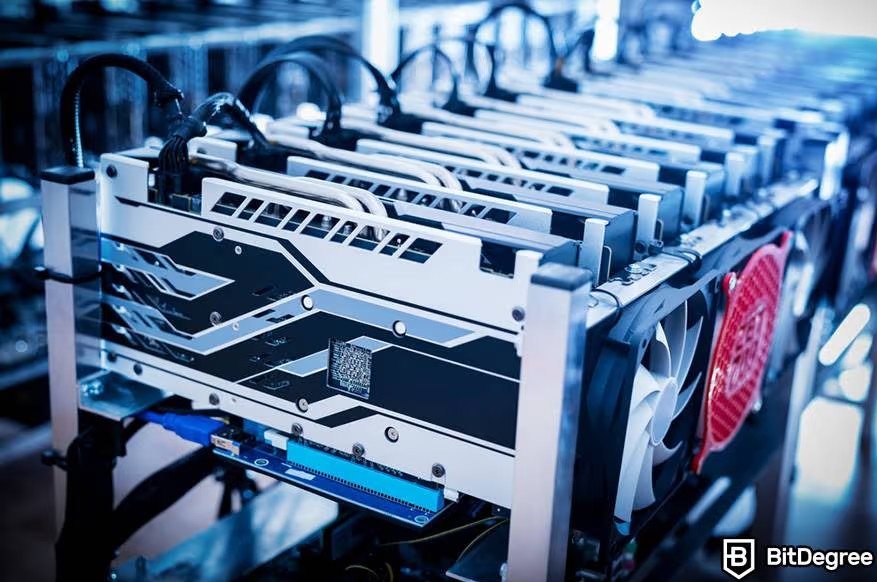For those looking to leverage a decentralized mapping protocol, consider leveraging innovative solutions and robust integrations offered by this platform. It transforms traditional mapping by utilizing crowd-sourced data from users, which can be invaluable for personalized navigation and analytics.
Key attributes include the ability to contribute to a constantly updating map through user-generated content. This feature empowers individuals to enhance geographic databases significantly. Additionally, advanced algorithms ensure that data integrity and accuracy are maintained, offering reliable insights for both casual users and businesses.
Another noteworthy aspect is the platform’s seamless integration with blockchain technology, enhancing security and transparency. Transactions within the network are recorded on an immutable ledger, providing trust among users while incentivizing contributions through token rewards.
To maximize the benefits of this mapping solution, users should actively participate by providing their own spatial data and utilizing available tools for analysis. This collaborative approach not only enriches the maps but also establishes a thriving community around geographic intelligence.
How Hivemapper Works: A Technical Overview
To integrate the Hivemapper network, users deploy dashcam devices equipped with cameras and GPS functionalities. These units capture high-resolution imagery while driving specific routes, continuously compiling data into an extensive mapping database.
Captured images undergo processing through advanced algorithms that ensure necessary accuracy in spatial recognition. Triangulation methods combine multiple data points for enhanced detail. The data storage architecture utilizes distributed ledger technology, allowing for secure and efficient data management.
Data verification involves community participation; users contribute validation efforts by cross-referencing images and geographical information to ensure authenticity. This decentralized approach strengthens the reliability of established maps.
| Component | Description |
|---|---|
| Dashcam Devices | Capture high-resolution images with GPS integration. |
| Processing Algorithms | Optimize image quality and spatial accuracy. |
| Distributed Ledger Technology | Facilitates secure data storage and access. |
| Community Verification | Involves users in validating the captured data. |
The mapping data generated is stored in a blockchain system, ensuring transparency. Each contribution is logged, creating an immutable record of updates and changes made over time.
Finally, the platform incentivizes active participants through token rewards, promoting continuous engagement. This model not only enhances data contribution but also fosters a collaborative environment among users.
Key Use Cases for Hivemapper in Various Industries
Integrating this mapping tool enhances logistics management by providing real-time traffic insights, optimizing delivery routes, and improving fleet efficiency. Companies can significantly reduce operational costs and delivery times utilizing up-to-date geographical data.
In urban planning, the tool enables accurate mapping of infrastructure, helping city officials visualize development zones, assess public transportation needs, and manage land use. Accurate data facilitates informed decision-making regarding community resources and zoning regulations.
Retail businesses leverage this mapping solution for site selection and market analysis. By analyzing demographic data and foot traffic trends, companies can identify optimal locations for new stores, increasing potential revenue and customer engagement.
Insurance providers use detailed mapping to assess risks associated with properties. This data helps in underwriting processes and determining premiums by evaluating factors like flood zones or proximity to natural disaster-prone areas.
In agriculture, farmers utilize mapping technologies to monitor crop health and manage resources effectively. Utilizing aerial imagery aids in identifying areas needing attention, optimizing yield, and reducing waste during planting and harvesting.
Transportation agencies benefit from this mapping capability by monitoring road conditions and planning maintenance schedules. Accurate mapping of infrastructure allows for better allocation of resources, ensuring safer travel for the public.
Moreover, emergency services rely on precision mapping during crises. Utilizing real-time data, agencies can efficiently deploy resources where they are most needed, improving response times during natural disasters and emergencies.
Exploring Hivemapper’s Data Collection Methods
Utilize decentralized data collection strategies to gather extensive geographic information. The primary approach involves crowdsourced mapping, where individuals contribute data using personal devices equipped with cameras.
- Users install custom software to automatically collect imagery while driving or walking.
- The software synchronizes captured images with GPS coordinates, ensuring precise data alignment.
- This method allows for continuous updates to the mapping database, reflecting real-time changes in the environment.
Contributing users earn rewards, incentivizing participation and increasing data volume. This model fosters community engagement while enhancing the quality and volume of collected data.
Additional methods include:
- Integration of existing databases and open-source maps to supplement user-generated content.
- Partnerships with local organizations to leverage their knowledge and resources for targeted data collection.
- Utilization of drone technology for aerial imagery, providing detailed geographical insights that ground-based methods may miss.
The combination of these techniques results in a robust mapping solution, ensuring data is constantly updated and relevant for various applications.
Understanding Hivemapper’s Mapping and Visualization Tools
Utilize the real-time mapping feature to keep track of changing environments. This feature allows users to access up-to-date information on various locations, enhancing decision-making processes.
The 3D visualization tool provides a realistic representation of geographic data. Leverage this capability to gain deeper insights into the topography and structures in specific areas, facilitating better analysis and project planning.
Employ the customizable visualization options to manipulate data views according to your preferences. Tailor layers and display settings for specific project needs, which streamlines the workflow and improves user experience.
Utilize collaborative capabilities to share maps and visualizations with team members or stakeholders. This supports effective communication and collaborative decision-making, ensuring all participants are on the same page.
Incorporate analytics tools to derive actionable insights from the mapped data. This data-driven approach aids in identifying trends, patterns, and anomalies that can impact strategic direction or project execution.
Regularly review the integration options with other data systems for improved workflow efficiency. This ensures that users can seamlessly combine various data sources, enhancing the overall mapping experience.
Hivemapper vs. Traditional Mapping Solutions: A Comparative Analysis
For users seeking flexibility and community involvement in cartography, the decentralized model of Hivemapper presents a compelling alternative to conventional mapping technologies. It allows individuals to contribute data, making the maps more representative of real-world conditions.
Data Contribution and Accuracy
Traditional mapping services rely heavily on their proprietary input, often leading to stale and incomplete datasets. In contrast, Hivemapper leverages user-generated content, ensuring timely updates and increased accuracy. Each user captures real-time information, which significantly enriches the map quality compared to standardized data updates from traditional providers.
Cost and Accessibility
Cost efficiency is another advantage of the Hivemapper platform. Users can access mapping services without high subscription fees typically associated with established providers. This democratization of mapping creates opportunities for small businesses and independent users who previously could not afford such services. Additionally, the platform’s accessibility enhances user engagement and encourages more inclusive data collection.
In summary, opting for this innovative mapping solution over traditional counterparts can lead to higher data accuracy, lower costs, and increased user participation in the mapping process.
How to Integrate Hivemapper into Your Business Operations
Leverage mapping capabilities by connecting to an API to access real-time data. Deploy annotations and insights for decision-making. Utilize custom data layers tailored to specific industry needs.
Incorporate mapping analytics into your existing platform for seamless information flow. This integration allows teams to visualize critical data, enhancing operational efficiency.
Train staff on how to utilize the mapping service effectively. Conduct workshops or provide access to user guides to ensure a smooth onboarding process.
Collaborate with developers to create tailored applications that address specific challenges within your organization. This can enhance productivity by providing targeted tools for particular tasks.
Regularly assess performance metrics to gauge the impact of the integration on business processes. Adjust strategies based on analytic feedback for continuous improvement.
Engage with customer support for troubleshooting and optimization suggestions. They can provide insights on best practices to maximize benefits from the system.
Experiment with different configurations and settings to determine the best fit for your operational context. Don’t hesitate to refine approaches based on user experience and feedback.
Q&A: What is hivemapper
What makes Hivemapper a decentralized global mapping network, and how does its drive-to-earn model reward each contributor?
Hivemapper is a decentralized global mapping network that leverages blockchain technology to build the world’s freshest map, and every contributor who uploads street-level imagery is rewarded with honey token through a drive-to-earn model that turns everyday driving into crypto income.
How do hivemapper dashcams collect 4k street-level imagery, and why is high-quality data crucial for a global map competing with companies like Google Maps?
Hivemapper dashcams capture 4k footage that meets strict quality assurance rules, so the decentralized mapping network receives high-quality, up-to-date maps of the world that rival services like google maps while staying fully community-owned.
Why was the project launched in november 2022 on the solana blockchain, and how does the network ensure decentralization rather than centralize map data?
The launch in november 2022 placed the mapping platform on the fast, low-fee solana blockchain, allowing hivemapper operates as decentralized physical infrastructure and preventing any single party from trying to centralize the governance of the hivemapper ecosystem.
What roles do the hivemapper app and hivemapper wallet play in helping contributors earn honey rewards?
The hivemapper app pairs the hivemapper wallet with dashcams, letting contributors are rewarded with honey tokens in real time; users can monitor earnings, verify data to the network, and transfer the native cryptocurrency to any solana-compatible wallet.
How does Hivemapper’s approach to mapping network that leverages depin differ from traditional mapping companies’ approach to mapping?
Depin, short for decentralized physical infrastructure, lets thousands of individual devices collect street-level imagery using their own dashcams, so the platform spreads physical infrastructure costs across a community of contributors instead of relying on a huge centralized fleet.
What governance mechanisms does the Hivemapper Foundation provide to balance freshness with quality imagery on the decentralized global map?
The Hivemapper Foundation sets quality thresholds, audits data, and releases APIs, ensuring freshness while maintaining an open governance of the hivemapper so contributors and developers alike can vote on protocol changes that improve the mapping ecosystem.
How can a contributor maximize earning opportunities and earn honey through partner programs within the Hivemapper ecosystem?
Contributors can earn honey by driving high-demand routes, completing mapping tasks in the hivemapper app, and referring friends; bonus honey rewards boost the utility token’s value for users who deliver the most useful map image coverage.
Why has the project attracted backing from solana ventures and other supporters seeking to build a decentralized global map?
Investors view Hivemapper as a mapping network that leverages web3 incentives, combining the scalability of the solana blockchain with a native cryptocurrency to reward contributors, creating a strong alternative to centralized mapping giants.
What safeguards protect users against phishing or other attacks that might target their crypto in the hivemapper wallet?
The hivemapper platform issues unique crypto wallet addresses, supports hardware-based authentication, and instantly alerts users of suspicious login attempts, ensuring honey rewards remain secure for all crypto users participating in the project.
How does Hivemapper aims to expand its decentralized global map through 2025 and keep the world’s freshest map ahead of commercial rivals?
By adding more 4k dashcams, improving incentive algorithms, and integrating wider APIs for developers, Hivemapper aims to create an ever-growing decentralized global map that stays current through continuous contributor activity, keeping its edge well into 2025.






